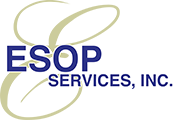Forbes ESOP Article
In the July 31, 2012, Forbes article “Spock Would Have Hated ESOPs, But Spock Never Owned a Company,” I would add, “And Spock was More Precise than the Author.”
The author Steve Parrish did an excellent job of providing a general outline on ESOP tax benefits and advantage to sellers. However, a few clarifications and one correction are in order and are listed below under their subtitles from this Forbes article.
“Illogic #1” – The Tax Code is Your Friend
The Author States
“Assuming the funding of the ESOP was accomplished through borrowing, effectively both the interest and principal payments on the loan are deductible.”
Clarification
Corporate contributions to repay the principal and interest are tax deductible to the corporation. However, there are certain limits to the amount that can be deductible.
The Author States
“Finally, assuming the company is (or becomes) an S corp, income generated inside the ESOP is free from federal income tax.”
Clarification
Income generated inside any ESOP is tax deferred for federal and state income tax purposes. It is the S corporation income that is not subject to federal income tax if an ESOP is a 100% owner. If an ESOP is a partial owner, then the tax-free income is proportional to the ESOP’s ownership. For example, a 100% ESOP-owned S corporation pays no federal income tax. If the ESOP owns 30%, then only 30% of the income is tax free. An added bonus is that most states mirror the federal income tax treatment.
The Author States
“These positive outcomes do not come from gaming the tax code – they are intended by Congress and have been so for nearly 40 years.”
Clarification
Tax deductible contributions to the ESOP to repay principal and interest on the ESOP loan have indeed been around for almost 40 years, but the tax-free income attributed to an ESOP-owned S corporation has only been around since 1998.
“Illogic #2” – You can Borrow to Fund your Pension.
The Author States
“At a time when financing can be difficult, ESOPs offer the possibility of flexible funding approaches with bank and seller financing.”
Clarification
In fact, in a number of transactions that we have quarterbacked, sellers have opted to do all the financing. Banks that are experienced with ESOP lending can be relatively aggressive in the terms they offer for ESOP loans because they understand the tax-free nature of the corporation going forward. There is even one bank making SBA guaranteed ESOP loans up to $5,000,000.
“Illogic #3” – The Best Way to Keep Your Business is to Sell it.
The Author States
“A final consideration is that the plan participants share in the beneficial interest but not the equity of the business until the financing is paid off.”
ESOP Services’ Correction
This is incorrect. ESOP participants are beneficial owners, and as such, do not have rights as minority shareholders. However, as a corporation makes a contribution that repays an ESOP loan and claims a tax deduction, shares must be allocated to the accounts of ESOP participants. At the end of the first year of ESOP debt repayment, participants share directly in the equity value of the company and benefit from the future growth. A vesting schedule is a normal plan provision, but after two years, a participant’s account must be at least 20% vested.
Illogic #4 – 1% Plus 99% Equals 110%.
The Author States
“The ESOP allows the rank in file to feel a sense of participation.”
Clarification
ESOPs are about more than just feelings. ESOP participants, as stated above, share directly in the equity value and growth of the company. They have a real piece of the action.
Visit Forbes.com to read the full article.
